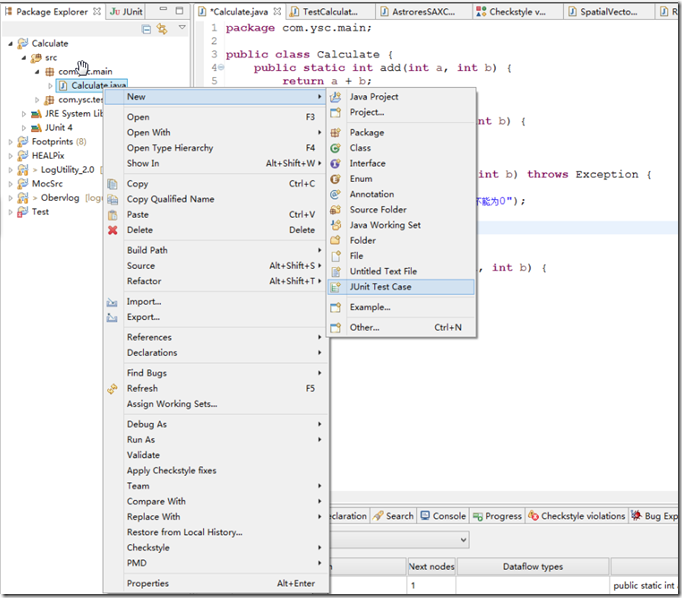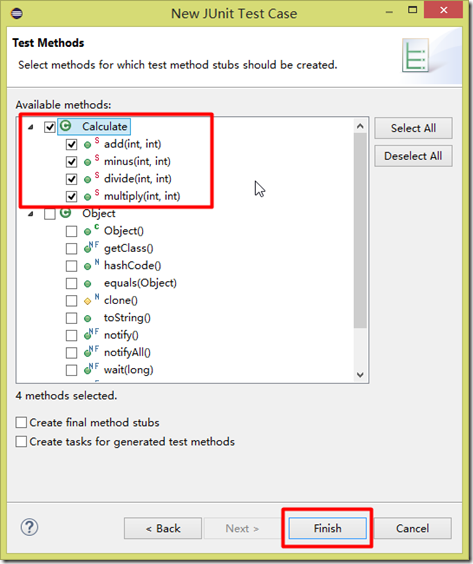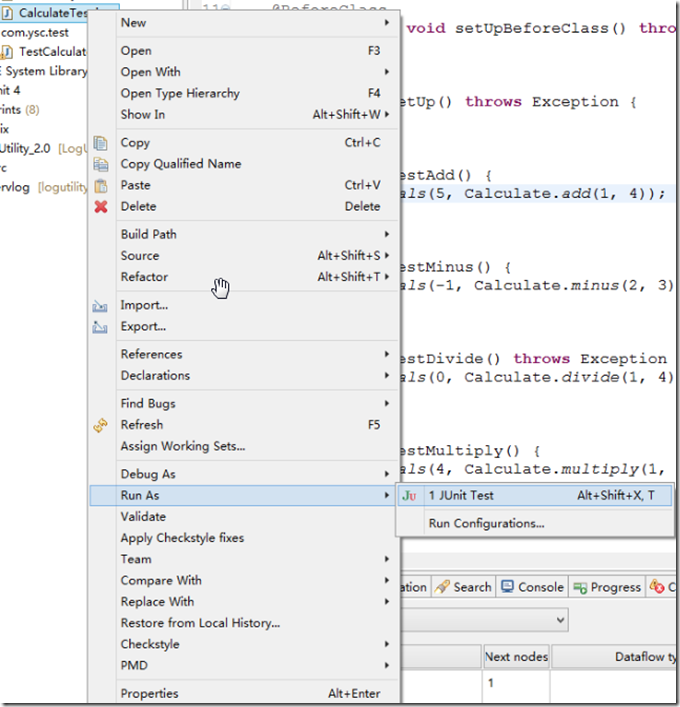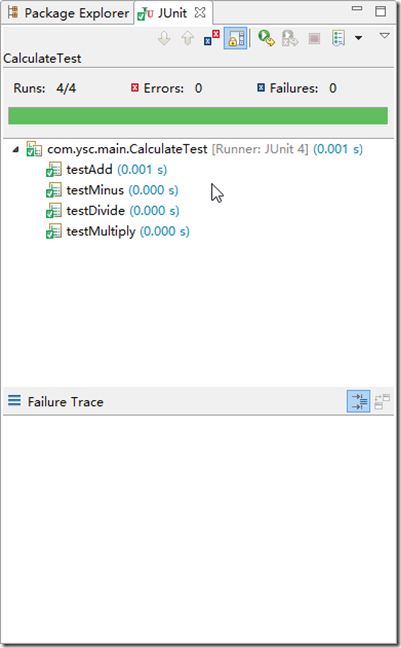如果是基于Eclipse使用Junit,在现在的Eclipse版本中都已经集成了Junit,可以根据自身的需求自由使用Junit3或者Junit4。在本文中主要通过测试简单算术程序(加,减,乘,除)来介绍Junit4的使用,并引入一个简单的案例进行讲解。
代码地址:https://github.com/ithinker1991/TestCourse
Step 1: 写出基本的算术代码Calculate.java
package com.ysc.main; public class Calculate { public static int add(int a, int b) { return a + b; } public static int minus(int a, int b) { return a - b; } public static int divide(int a, int b) throws Exception { if (b == 0) { throw new Exception("除数不能为0"); } return a / b; } public static int multiply(int a, int b) { return a * b; } }
Step 2: 对Calculate类添加Junit4的测试单元,右键->new->JUnit Test Case,如下图
Step 3: 对添加的测试用例进行配置,命名为TestCalculate,点击Next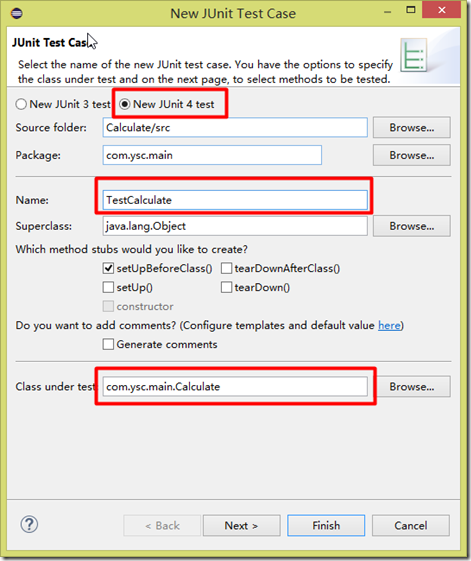
Step 4: 选择需要测试的函数,点击Finish,完成JUnit的基本配置
Step 5: 在经过上面的步骤之后,就可以得到配置好的测试用例
package com.ysc.main; import static org.junit.Assert.*; import org.junit.Before; import org.junit.BeforeClass; import org.junit.Test; public class CalculateTest { @BeforeClass public static void setUpBeforeClass() throws Exception { } @Before public void setUp() throws Exception { } @Test public void testAdd() { fail("Not yet implemented"); } @Test public void testMinus() { fail("Not yet implemented"); } @Test public void testDivide() { fail("Not yet implemented"); } @Test public void testMultiply() { fail("Not yet implemented"); } }
Step 6: 现在需要做的就是添加上需要测试的数据
package com.ysc.main; import static org.junit.Assert.*; import org.junit.Before; import org.junit.BeforeClass; import org.junit.Test; public class CalculateTest { @BeforeClass public static void setUpBeforeClass() throws Exception { } @Before public void setUp() throws Exception { } @Test public void testAdd() { assertEquals(5, Calculate.add(1, 4)); } @Test public void testMinus() { assertEquals(-1, Calculate.minus(2, 3)); } @Test public void testDivide() throws Exception { assertEquals(0, Calculate.divide(1, 4)); } @Test public void testMultiply() { assertEquals(4, Calculate.multiply(1, 4)); } }
Step 7: 开始进行测试,右键->Run as->JUnit Test
由于添加的数据都是正常运行的数据,所有用例都测试正常
Step 6: 单纯一组测试参数肯定不足以确认代码已经达到了预期标准,应该对所有输入进行等价类划分,进行参数化测试。在此例中只对add函数进行参数化测试。
| 左值 | 右值 | 预期结果 | |
| case 1 | 1 | 1 | 2 |
| case 2 | -1 | -1 | -2 |
| case 3 | 1 | -1 | 0 |
| case 4 | 1 | -2147483648 | |
| case 5 | -2147483648 | -1 | 2147483647 |
修改TestCalculate,注意在类上方需要加注解 @RunWith(Parameterized.class)
package com.ysc.main; import static org.junit.Assert.assertEquals; import java.util.Arrays; import java.util.Collection; import org.junit.Before; import org.junit.BeforeClass; import org.junit.Test; import org.junit.runner.RunWith; import org.junit.runners.Parameterized; import org.junit.runners.Parameterized.Parameters; @RunWith(Parameterized.class) public class CalculateTest { @Parameters public static Collection data() { return Arrays.asList(new Object[][] { { 1, 1, 2 }, { -1, -1, -2 }, { -1, 1, 0 }, { 2147483647, 1, -2147483647 }, { -2147483648, -1, 2147483647 } }); } private int leftVal; private int rightVal; private int expectedVal; public CalculateTest(int leftVal, int rightVal, int expectedVal) { super(); this.leftVal = leftVal; this.rightVal = rightVal; this.expectedVal = expectedVal; } }
所有测试用例通过测试,如下图
